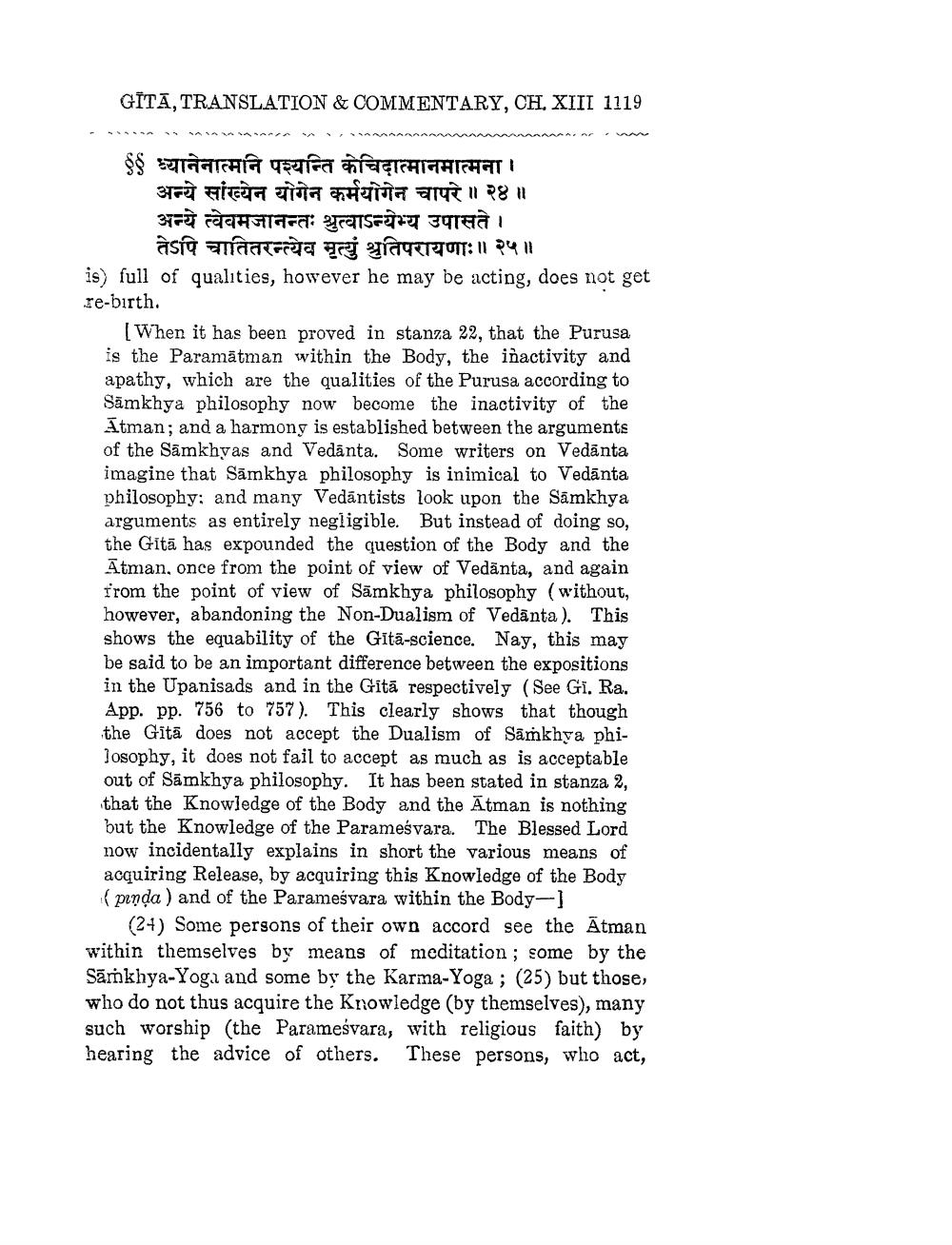________________
GĪTĀ, TRANSLATION & COMMENTARY, CH. XIII 1119
६६ ध्यानेनात्मनि पश्यन्ति केचिदात्मानमात्मना।
अन्ये सांख्येन योगेन कर्मयोगेन चापरे ॥२४॥ अन्ये त्वेवमजानन्तः श्रुत्वाऽन्येभ्य उपासते।
तेऽपि चातितरन्त्येव मृत्युं श्रुतिपरायणाः॥२५॥ is) full of qualities, however he may be acting, does not get re-birth.
( When it has been proved in stanza 22, that the Purusa is the Paramātman within the Body, the inactivity and apathy, which are the qualities of the Purusa according to Sāmkhya philosophy now become the inactivity of the Atman; and a harmony is established between the arguments of the Sāmkhyas and Vedānta. Some writers on Vedānta imagine that Sāmkhya philosophy is inimical to Vedānta philosophy; and many Vedāntists look upon the Sāmkhya arguments as entirely negligible. But instead of doing so, the Gitā has expounded the question of the Body and the Atman, once from the point of view of Vedānta, and again from the point of view of Sāmkhya philosophy (without, however, abandoning the Non-Dualism of Vedānta). This shows the equability of the Gītā-science. Nay, this may be said to be an important difference between the expositions in the Upanisads and in the Gitā respectively (See Gi. Ra. App. pp. 756 to 757). This clearly shows that though the Gītā does not accept the Dualism of Sāṁkhya philosophy, it does not fail to accept as much as is acceptable out of Sāmkhya philosophy. It has been stated in stanza 2, that the Knowledge of the Body and the Ātman is nothing but the Knowledge of the Parameśvara. The Blessed Lord now incidentally explains in short the various means of acquiring Release, by acquiring this Knowledge of the Body (pinda) and of the Parameśvara within the Body-)
(24) Some persons of their own accord see the Ātman within themselves by means of meditation; some by the Sārkhya-Yoga and some by the Karma-Yoga ; (25) but those, who do not thus acquire the knowledge (by themselves), many such worship (the Parameśvara, with religious faith) by hearing the advice of others. These persons, who act,




